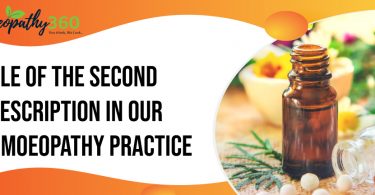Homoeopathy is scientific as the law of similar is a fundamental truth, deduced logically and established experimentally. This law expresses a curative relationship between disease and the capacity of the drugs affecting the host. Homoeopathy is essentially an experimental clinical medicine. Its practice denotes it’s the best possible scientific use of drugs to cure.
Scientific concept of holistic approach, dynamic action –
The principle of optima is a formula comprising the condition of space, time, quality, quantity and form which have to be considered as interdependent with regard to any particular action.
Scientific concept of health and disease, potentised and crude drugs, order and chaos etc-
Entropy is a measurable index of the irreversible loss of energy which ensues when a system or object changes from higher temperature to a state of lower temperature. A consequence of this principle is that a system of higher orders higher organization contains something which is irretrievably lost when it is reduced in the direction of chaos.
Scientific concept of individualistic approach, nothing static but dynamic –
Each and every action is unique, cannot recur as the same, but only as if it were the same or similar. Thus we would be able to observe only recurrence of events, but surely with continuity in them and constancy in their sequence, so than one certain kind of event will not be seen to occur without certain preceding events conditioning it.
Science and homoeopathy- Homoeopathy is based on
- Law of similar
- Law of simplex
- Minimum dose
A quick and correct decision in diagnosing a disease in a patient is necessary when a physician engages with a serious case. The remedies should flash on the mind of the physician. That is why Hahnemann greatly emphasized the judgment at bedside as the supreme one in the life of medical profession.
Single remedy rubrics in Kent’s repertory are extremely useful for curative and successful prescription.
Scientificity is used to describe the scientific nature of homoeopathy. It is necessary to look at the basic aspects of science in general and compare these with the methods employed in homoeopathy before we draw any conclusion on scientificity. They are
- Observability –case study which forms a raw date
- Reproductivity – properly collected aw data cannot be altered or discredited. Therefore such raw data is always reproducible.
- Predictability – ideas evolved from observation.
- Testability – this is most important concept in the formation of scientific hypothesis
All good science can only progress by the constant formation and reformation of testable hypothesis which more and more closely fit the observation.
Advancement in homoeopathy
Homoeopathy acts as a prophylaxis in many endemic and epidemic diseases which proves the advancement. The preventive medicine revealed by the genus epidemics study was widely used for cholera, Japanese encephalitis, chikun guniya, dengue hemorrhagic fever, leptospirosis which had proven new standards in community health care.
The recent advancement in science and materials, laboratory, has helped to interpret the extreme scientificity of homoeopathic medicines through the explanation favoring the formation of nano –molecular bubbles in the vehicles. As a part of the act of homoeopathic potentisation where the OH radicals present in these inherits the properties of the mother drug substance at its hybridization levels which remains in the vehicles much after the non-existence of the mother drug quantitatively. Thus explaining the action of homoeopathic medicine of higher dynamization status.
The mitochondrial DNA concepts and the fundamentals of homoeopathic philosophy about concepts of miasm, the formation of psora in particular, gives hope in a new direction, where the genetically inherited diseases could be added to homoeopathic scope and domain with possibilities of efficient intervention.
Conclusion Hahnemann effected a revolution in all these fields but modern medicines has realized some of his concepts and ideas only recently but without acknowledging their resource, some of his ideas still remain ahead of the general development of human thoughts in the field.
Bibliography
- Principle and practice of homoeopathy by Dr.M.L.Dhawale MD
- The principle and art of cure by homoeopathy,H.A.Roberts,MD
- Dictionary of organon by R.R.Joarder.
- Organon of homoeopathy by B.K.Sarkar.




